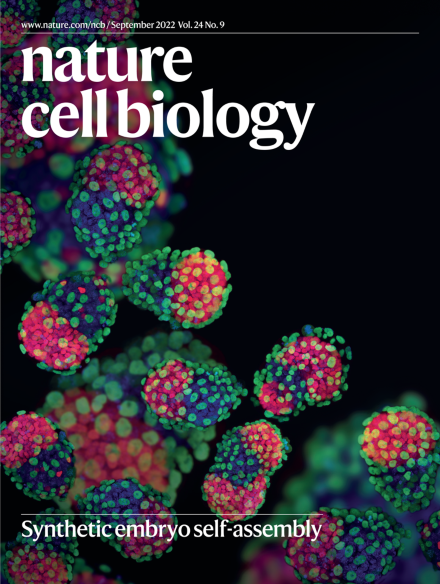Cholesterol sensing by the SCAP–FAM134B complex regulates ER-phagy and STING innate immunity
IF 19.1
1区 生物学
Q1 CELL BIOLOGY
引用次数: 0
Abstract
The endoplasmic reticulum (ER) is central to cholesterol biosynthesis and trafficking, yet paradoxically maintains low cholesterol levels, enabling it to sense fluctuations that impact various signalling pathways. However, the role of ER cholesterol in cellular signalling remains unclear. Here we show that the ER-phagy receptor FAM134B interacts directly with both cholesterol and SCAP, a key regulator of cholesterol biosynthesis. When ER cholesterol is high, FAM134B and SCAP are sequestered by cholesterol-tightened interactions, halting ER-phagy, STING activation and cholesterol synthesis. Under low cholesterol conditions, FAM134B dissociates from SCAP, allowing SCAP to activate SREBP2 and upregulate cholesterol synthesis, while FAM134B either facilitates ER-phagy through oligomerization or aids STING trafficking to activate innate immune responses. These findings reveal that the SCAP–FAM134B complex senses ER cholesterol levels, regulating both ER-phagy and immune signalling, with implications for diseases linked to cholesterol imbalance. The authors show that the endoplasmic reticulum-phagy receptor FAM134B interacts with SCAP to regulate cholesterol biosynthesis, sequestering SCAP when endoplasmic reticulum cholesterol is high but dissociating upon low cholesterol levels, allowing SCAP to activate cholesterol synthesis.

SCAP-FAM134B复合物对胆固醇的感知调节er吞噬和STING先天免疫。
内质网(ER)是胆固醇生物合成和运输的核心,但矛盾的是,它维持低胆固醇水平,使其能够感知影响各种信号通路的波动。然而,内质网胆固醇在细胞信号传导中的作用尚不清楚。本研究表明,er吞噬受体FAM134B直接与胆固醇和SCAP相互作用,SCAP是胆固醇生物合成的关键调节因子。当内质网胆固醇高时,FAM134B和SCAP通过胆固醇收紧相互作用被隔离,阻止内质网吞噬、STING激活和胆固醇合成。在低胆固醇条件下,FAM134B与SCAP分离,允许SCAP激活SREBP2并上调胆固醇合成,而FAM134B通过寡聚化促进er吞噬或帮助STING运输激活先天免疫反应。这些发现表明,SCAP-FAM134B复合体感知内质网胆固醇水平,调节内质网吞噬和免疫信号,与胆固醇失衡相关的疾病有关。
本文章由计算机程序翻译,如有差异,请以英文原文为准。
求助全文
约1分钟内获得全文
求助全文
来源期刊

Nature Cell Biology
生物-细胞生物学
CiteScore
28.40
自引率
0.90%
发文量
219
审稿时长
3 months
期刊介绍:
Nature Cell Biology, a prestigious journal, upholds a commitment to publishing papers of the highest quality across all areas of cell biology, with a particular focus on elucidating mechanisms underlying fundamental cell biological processes. The journal's broad scope encompasses various areas of interest, including but not limited to:
-Autophagy
-Cancer biology
-Cell adhesion and migration
-Cell cycle and growth
-Cell death
-Chromatin and epigenetics
-Cytoskeletal dynamics
-Developmental biology
-DNA replication and repair
-Mechanisms of human disease
-Mechanobiology
-Membrane traffic and dynamics
-Metabolism
-Nuclear organization and dynamics
-Organelle biology
-Proteolysis and quality control
-RNA biology
-Signal transduction
-Stem cell biology
 求助内容:
求助内容: 应助结果提醒方式:
应助结果提醒方式:


